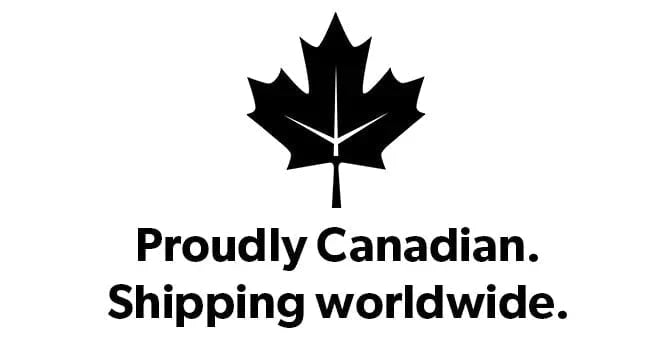CCM Premier 2 Pro Senior Goalie Catcher

Free Shipping Over $200

Fast Easy Returns

Best Price Promise
The CCM Premier II trapper has the same comfortable feel and closure that longtime Premier wearers are attracted to, with some improvements made to enhance performance.
The Premier Pro comes stock with the traditional 590 (60 degree) break angle that closes very easily off the shelf, and creates a seamless closure. This time around, CCM wanted to improve palm protection and prevent stingers by reinforcing the palm with shock absorbing D30 Technology.
New for the Premier ll catch glove is a stock double "T" pocket. The double T allows for increased visibility into the glove when a goalie is searching for a puck during a scramble. As well the double T offers a wider pocket for increased surface area and a decreased chance of a popout.
Also, the floating wrist cuff increases the goalie's range of motion. Partnering this with the large single-T pocket makes for optimal coverage in the net.
| Feature | Description |
|---|---|
| Brand | CCM |
| Series | Premier |
| Adjustable Straps | Wrist, Backhand, Fingers |
| Break Angle | 60 Degree |
| Category | Elite |
| Cuff & Thumb Design | One-Piece |
| Customizable | Yes |
| External Material | Speedskin, 420D High Abrasion Nylon |
| Made In | China |
| Double-T | |
| Warranty | 90 Days |
Goalie Catch Gloves Sizing
More times than not, trappers are often overlooked compared to other pieces of gear where fit is concerned. Perhaps this is a result of the limited sizes available compared to other pieces of equipment: youth, junior, intermediate and senior. The first step to finding the correct trapper is to approximate your size by following the estimated age range and “heel-of-palm-to-tip-of-middle-finger” measurement:
- Youth (age 5 – 8): 4.5” – 5.75” / 119 – 143 mm
- Junior (age 8 – 11): 6.35” – 5.75” / 144 – 160 mm
- Intermediate (age 11 – 13): 6.35” – 7” / 161 – 178 mm
- Senior (age 14 and up): 7” – 8.5”* / 179 – 216 mm
Once a size has been estimated it is important to ensure that the palm lines up properly within the catching glove so that it can be closed without excessive force. Obviously new gloves will be difficult to close initially, but through either using it repeatedly or baking it with our in-house convection skate ovens they will soften up and allow the goaltender to easily close. We do not recommend using any conventional in-home ovens, as the results have been very unpredictable in the past.
After you’ve checked the palm, the second thing to look for is that the wrist strap goes directly across your wrist bone and has little to no interference with the chest/arm. The catch glove should be able to twist and maneuver in a multitude of save selections in addition to being able to grip the stick when puck handling, all the while keeping the hand in the correct position within the trapper.
For growing goaltenders, it is still best to stick within these guidelines rather than moving up to the next size to accommodate growth. Large gloves are going to inhibit the goalie’s control and inhibit development. It should be noted that as a result of the limited size selection, goalies wouldn’t jump sizes as quickly as other pieces of gear.
The CCM Premier II trapper has the same comfortable feel and closure that longtime Premier wearers are attracted to, with some improvements made to enhance performance.
The Premier Pro comes stock with the traditional 590 (60 degree) break angle that closes very easily off the shelf, and creates a seamless closure. This time around, CCM wanted to improve palm protection and prevent stingers by reinforcing the palm with shock absorbing D30 Technology.
New for the Premier ll catch glove is a stock double "T" pocket. The double T allows for increased visibility into the glove when a goalie is searching for a puck during a scramble. As well the double T offers a wider pocket for increased surface area and a decreased chance of a popout.
Also, the floating wrist cuff increases the goalie's range of motion. Partnering this with the large single-T pocket makes for optimal coverage in the net.
| Feature | Description |
|---|---|
| Brand | CCM |
| Series | Premier |
| Adjustable Straps | Wrist, Backhand, Fingers |
| Break Angle | 60 Degree |
| Category | Elite |
| Cuff & Thumb Design | One-Piece |
| Customizable | Yes |
| External Material | Speedskin, 420D High Abrasion Nylon |
| Made In | China |
| Double-T | |
| Warranty | 90 Days |
Goalie Catch Gloves Sizing
More times than not, trappers are often overlooked compared to other pieces of gear where fit is concerned. Perhaps this is a result of the limited sizes available compared to other pieces of equipment: youth, junior, intermediate and senior. The first step to finding the correct trapper is to approximate your size by following the estimated age range and “heel-of-palm-to-tip-of-middle-finger” measurement:
- Youth (age 5 – 8): 4.5” – 5.75” / 119 – 143 mm
- Junior (age 8 – 11): 6.35” – 5.75” / 144 – 160 mm
- Intermediate (age 11 – 13): 6.35” – 7” / 161 – 178 mm
- Senior (age 14 and up): 7” – 8.5”* / 179 – 216 mm
Once a size has been estimated it is important to ensure that the palm lines up properly within the catching glove so that it can be closed without excessive force. Obviously new gloves will be difficult to close initially, but through either using it repeatedly or baking it with our in-house convection skate ovens they will soften up and allow the goaltender to easily close. We do not recommend using any conventional in-home ovens, as the results have been very unpredictable in the past.
After you’ve checked the palm, the second thing to look for is that the wrist strap goes directly across your wrist bone and has little to no interference with the chest/arm. The catch glove should be able to twist and maneuver in a multitude of save selections in addition to being able to grip the stick when puck handling, all the while keeping the hand in the correct position within the trapper.
For growing goaltenders, it is still best to stick within these guidelines rather than moving up to the next size to accommodate growth. Large gloves are going to inhibit the goalie’s control and inhibit development. It should be noted that as a result of the limited size selection, goalies wouldn’t jump sizes as quickly as other pieces of gear.
| Senior | *7" - 8 ½" |
|---|---|
| Intermediate | 6 ⅓" - 7" |
| Junior | 5 ¾" - 6 ⅓" |
| Youth | 4 ½" - 5 ¾" |
| *8" - 8 ½" is typically seen as a SR-XL palm **Hand Measurement is made from heel of palm to the tip of your middle finger |
|
Goalie Catcher Sizing
More times than not, the fit of your Goalie Catcher is often overlooked. This is likely the result of the limited size availability compared to other pieces of equipment, however a properly sized Catcher provides you the protection and stick control you trust.
Which Catcher Size is for you?
The first step to finding the correct Catcher size is to utilize the “heel-of-palm-to-tip-of-middle-finger” measurement. This measurement will generally send you to the appropriate size you need.
Analyzing the Catcher Fit
It is important to make sure the palm lines up properly within the catching glove, so that it can be closed without excessive force. New goalie gloves will be difficult to close initially, but through either a standard break-in process, or "baking" the catcher with our in-house convection skate ovens, they will soften over time.
*We do not recommend using any conventional in-home ovens, as the results have been very unpredictable in the past and could damage your Catcher.*
Next you want to ensure the adjustable wrist strap goes directly across the wrist bone, and has minimal to no interference with your chest protector. The goaltender should be able to swivel their wrist to accommodate a range of save selections without any restrictions from the chest protector.
Sizing for Growing Goaltenders
For growing goaltenders we recommend following the guidelines set above, rather than sizing up to accommodate growth. Oversized goalie gloves restrict control, especially for young developing goalies. As you climb the size ladder for Catchers, typically the glove requires more strength for pocket closure.
Which Hand Do I Need?
Figuring out which hand you need for your Catcher can be slightly confusing. Goalies generally refer to themselves as "REGULAR" or "FULL RIGHT". Below is the easiest way to simplify which hand you need.
- Goalie Catcher Hands Simplified
- Regular - Catcher worn on your Left Hand
- Full Right - Catcher worn on your Right Hand
















